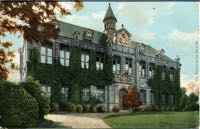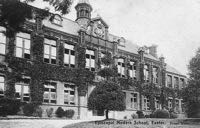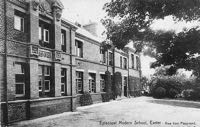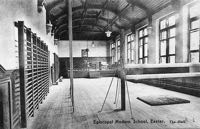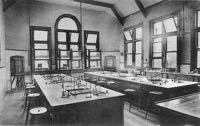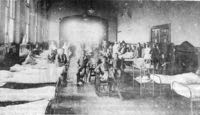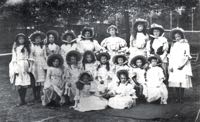
Bishop Blackall Girls' Grammar School, 1878 to 1983
Page updated 7th June 2015
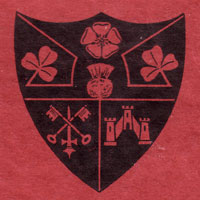 During the reign of
Queen Anne, Bishop Offspring
Blackall (Bishop 1708-1716), was responsible for the founding of
four charitable schools in the city through the Episcopal Charity
Trust. The Episcopal Charity Schools were founded in 1709, funded by
voluntary subscription and collections made at the Cathedral and
churches of Exeter. The single building was divided into separate
schools
for boys and girls. The four schools were quickly reduced to two, one for boys and one for girls. They became know as 'middle' schools, based on their middle class intake, rather than age.
During the reign of
Queen Anne, Bishop Offspring
Blackall (Bishop 1708-1716), was responsible for the founding of
four charitable schools in the city through the Episcopal Charity
Trust. The Episcopal Charity Schools were founded in 1709, funded by
voluntary subscription and collections made at the Cathedral and
churches of Exeter. The single building was divided into separate
schools
for boys and girls. The four schools were quickly reduced to two, one for boys and one for girls. They became know as 'middle' schools, based on their middle class intake, rather than age.
Bishop Blackall died of his injuries after he fell off his horse in 1716. HIs overseeing of the founding of his schools lasted only seven years, but he left a legacy that is still with us today.
In 1817, a new building was constructed for the two schools, allowing an increase to 250 pupils from the original 200. Girls were admitted at the age of 8 and left at 13, at an annual subscription of 21s. By 1850 the role had increased to 310. All denominations could attend, but they had to attend Church of England services on Sundays.
Over the years various donations were made to the school by wealthy citizens of Exeter including six houses and 13 acres of land, at Hillscourt, given by Samuel Daniel, in 1738.
In 1870 a special court was set up for the funding of the school, mostly through the endowment of property. In October 1872, a site in Queen Street, near the old post office, was leased at a cost of £110 per annum. The school was named the Episcopal Middle School for Girls. By 1878 it had become the Middle Class School for Girls, still based in Queen Street, under the headmistress, Miss Bertha A Bray, who remained for five years.
The Move to Hillscourt
In 1882, the then head mistress decided that another move, this time to the site in Pennsylvania Road at Hillscourt would take place. In 1887 the foundation stone was laid and the Queen's Street school moved into the James Jerman designed building when it was complete.
During the First World War the school moved to Rougemont House and the building was taken over and became Hospital Unit No. 2 and run by the Red Cross to nurse soldiers from the front. At the end of the war in 1919, the school moved back to Hill's Court.
Bishop Blackall School
In 1920 the school was renamed the Exeter Episcopal Modern School and then in 1934 it was finally named Bishop Blackall School for Girls in honour of its 19th century founder Henry Blackall and his ancestor, Bishop Blackall. The school was damaged in the bombing during the Second World War.
The Local Education Authority of Exeter took over control in 1946, and the school started enrolling girls who had passed their Eleven Plus exam. In 1955, the head, Miss Ragg retired and was replaced by Miss Margaret Church. By the end of the 1950s there were 530 girls on the register.
In 1972, it became a comprehensive school, along with the other five state high schools in the city, losing its sixth form in the process.
A fire in 1979 swept through the school, damaging the front including the hall, physics laboratory and Book Room. The fire appliances called battled for twelve hours to put out the flames. The fire was probably caused by an electrical fault in some stage lighting. Staff were called from their holidays to salvage books and equipment, and large partitions erected to shield the damaged areas from the rest of the school. The fire team that doused the flames were invited back and treated to tea. A special book, signed by the whole school was presented to the crew.
Only four years later another re-organisations in Exeter saw the school merge with Hele's Grammar School and become St Peter's Church of England High School. The Hill's Court site was taken over by Exeter College. The premises have since been relinquished by the college and is now residential accommodation.
There is a FaceBook Bishop Blackall Alumini page.
Sources: 19th Century newspapers and the last school magazine (1983).
│ Top of Page │
